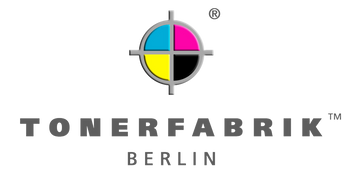Choosing the right paper can have a significant impact on the quality and appearance of your prints. Different printing projects require different types of paper to achieve the best results. In this blog post, we will explore the different types of paper and their optimal applications.
Why choosing the right paper is important
Choosing the right paper is crucial because it affects the print quality and durability of your documents. Whether you want to create simple text documents, brilliant photos or environmentally friendly prints, every project has specific requirements that can be met by choosing the right paper.
Aim of this blog post
The goal of this blog post is to give you an informed overview of the different paper types and help you choose the right paper for your specific printing needs. We will explain in detail the characteristics, benefits and ideal applications for different paper types.
Standard copy paper
Standard copier paper is the most commonly used paper in offices and homes. It is versatile and cost-effective, ideal for everyday use.
Features and Benefits
Standard copy paper typically has a weight of 80 g/m² and a matte finish. It is suitable for printing text documents and simple graphics. This paper offers a good balance between economy and print quality and is usually suitable for inkjet and laser printers.
Suitable applications
This paper is great for office documents, reports, notes, and other everyday printing tasks. It is also ideal for printing drafts and internal documents.
Photo paper
Photo paper is specially designed for printing images and high-quality graphics. It offers brilliant colors and sharp details.
Features and Benefits
Photo paper is available in various weights, typically between 180 and 300 g/m², and comes in a glossy or semi-gloss finish. It provides vivid colors and detailed prints, making it ideal for photographs and high-quality graphics. The increased stability and feel give the paper a professional touch.
Suitable applications
Photo paper is ideal for printing photographs, marketing materials, presentations and other visual projects where high print quality is required.
Recycled paper
Recycled paper is an environmentally friendly choice for printing documents. It is made from 100% recycled material, helping to conserve natural resources and reduce waste.
Features and Benefits
Recycled paper typically has a weight of 80 to 100 gsm and a matte finish. It offers reasonable print quality and is an excellent option for environmentally conscious consumers. Using recycled paper helps reduce the environmental footprint and supports sustainable practices.
Suitable applications
Recycled paper is well suited for internal documents, drafts, memos and other printing tasks where sustainability is a priority. It can also be used for official correspondence and marketing materials to reinforce a company's eco-friendly image.
Inkjet and laser printing paper
Inkjet and laser printing papers are specially designed to achieve the best results with inkjet and laser printers. These paper types are optimized to meet the specific requirements of each printing technology.
Features and Benefits
Inkjet paper has a special coating that ensures that the ink dries quickly and does not bleed, resulting in sharp and clear print results. Laser printing paper, on the other hand, is heat-resistant and allows for optimal toner adhesion, resulting in long-lasting and smudge-proof prints. Both types of paper are available in different weights and surface textures to meet different printing needs.
Suitable applications
Inkjet paper is ideal for printing color documents, photos and graphics where high color depth and detail are required. Laser printing paper is ideal for printing text documents, presentations and business correspondence where high print quality and durability are important.
Letterhead and business paper
Letterhead and business stationery are designed specifically for formal communication and official documents. They convey professionalism and leave a lasting impression on the recipients.
Features and Benefits
Letterhead and business paper are characterized by a weight of 90 to 120 g/m² and often have a slightly textured surface. These types of paper are usually of high quality, which gives them an elegant feel and a professional look. The structuring and higher weight help to make the paper robust and well suited for printing text and graphics.
Suitable applications
This paper is great for business letters, invitations, certificates and other formal documents. It is often used for official correspondence to create a professional impression. High-quality brochures and other marketing materials can also benefit from the use of letterhead and stationery.
Conclusion
Choosing the right paper is crucial to the quality and impression of your print projects. Each paper type has specific properties and advantages that should be selected depending on the intended use.
Summary of key points
Standard copier paper is ideal for everyday printing, while photo paper delivers the best results for images and high-quality graphics. Recycled paper is an environmentally friendly option, and inkjet and laser printing papers are specifically designed for the respective printing technology. Letterhead and business stationery add a professional touch to official documents and business correspondence.
Recommendations for paper selection
For everyday use and simple print jobs, standard copy paper is the best choice. For high-quality graphics and photos, you should choose photo paper. If sustainability is important, recycled paper is ideal. For specialized print jobs with inkjet or laser printers, choose the appropriate paper. For formal and official documents, we recommend using high-quality letterhead and business paper.



